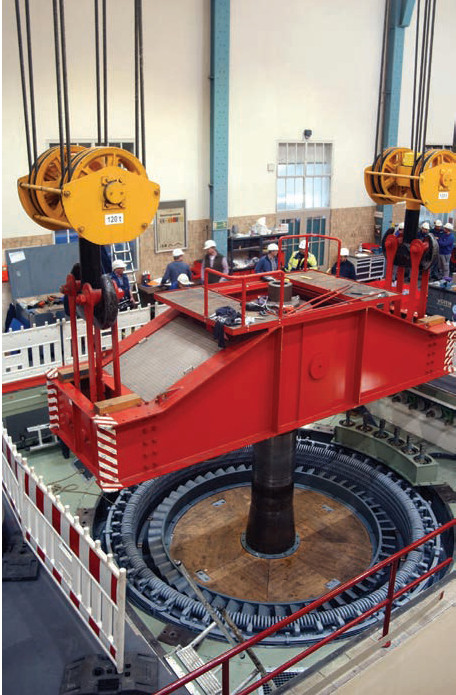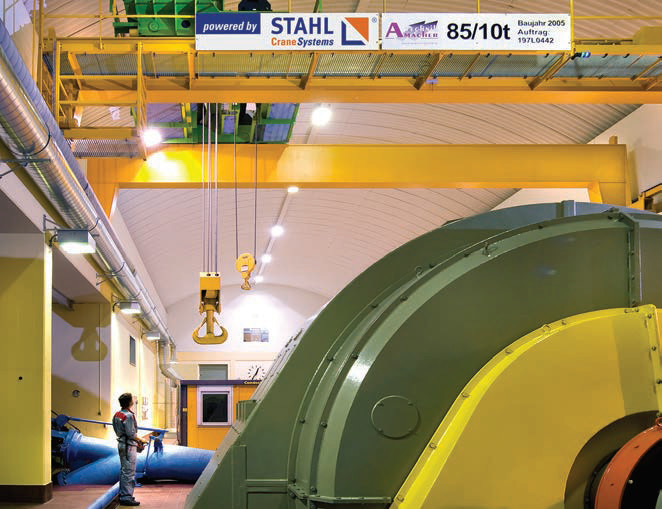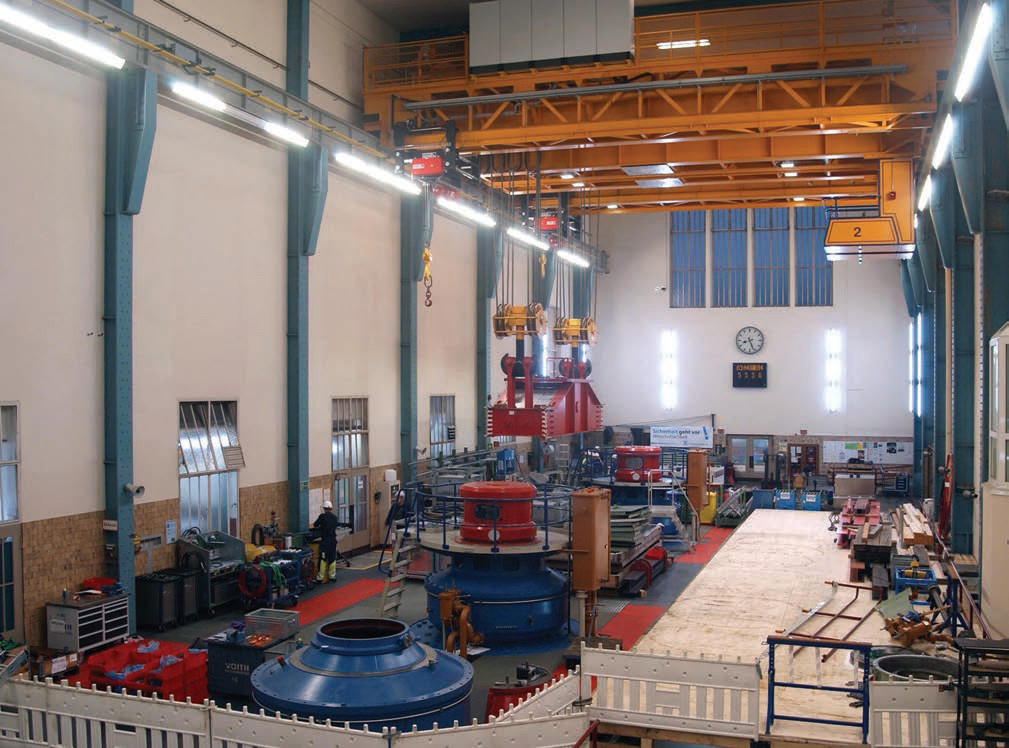Staying power
8 August 2019John Bensalhia investigates the latest developments in hoisting equipment and machinery for the power generation industry
Recent statistics in fields such as wind, solar, oil and gas power showcase the global rise in interest. A report at evwind.es stated that in 2018, European offshore wind capacity increased by 18%, with this sector contributing an annual figure of €4.6bn to the EU GDP. Meanwhile, the American Wind Energy Association’s US Wind Industry Annual Report noted the 114,000 full-time jobs connected with the wind energy sector, including an 8% increase of an extra 8,500 jobs, in 2018.
European progress for solar energy is also positive. SolarPower Europe’s Global Market Outlook 2019–2023 reported that overall, Europe added 11.3GW (gigawatts) in 2018, which was a 21% increase from 2017’s 9.3GW. This year, the report says that the Medium Scenario will see increase soar by more than 80% to 20.4GW, while next year’s forecasted figure will see an additional 24.1GW.
Hydropower is big news in the Asia- Pacific region. The Hydropower Market Report of 2018–2023 observed that China was a major country for using this method of power, accounting for over a quarter of global hydropower capacity—with total installed capacity of 331GW.
With high global demand, the power generation sector continues to be a major sector for manufacturers of hoists and related products. Geographically, demand comes from a number of locations, and with higher concentrations of interest depending on the power sectors involved. For example, Hannes Döllinger, director at Konecranes Industrial Cranes, Germany, says that the trend in the wind power sector is the coast, but “combined cycle power plants can also be found locally in cities.”
Thomas Kraus, support centre director at Stahl CraneSystems, explains that the Asian region is “still a hot spot for power generation plants,” while regions like Africa and South America should also be on the list.
With respect to different power generation plant types—wind farms, solar plants, oil and gas powered turbines, hydropower—it’s worth pointing out that there are differences. Thomas Kraus says that in general, the material handling business in the different sectors is not comparable. “On wind mills, you mainly seek simple chain hoist solutions covering the needs of the operators like high lifting heights, vibration absorption. In oil and gas or hydropower plants, you mainly need huge cranes with high SWL for assembling the turbines and maintaining them.”
As the trend for renewable energy grows, this in turn speaks in favour of renewable power plants, such as wind farms or hydroelectric power plants.
Döllinger says that Konecranes is also seeing an increase in the number of biomass power plants. “Power plants using fossil fuels will certainly become fewer. At the same time, attempts are being made to increase their efficiency and new or modernised natural gas or combined cycle power plants (gas and steam turbine power plants) are being planned or built accordingly. Of course, the aim is also to reduce CO2 emissions.”
Konecranes’s customers can be found in the fields of wind energy, biomass systems as well as modern combined cycle power plants/fossil power plants. “The activities can be observed worldwide,” says Döllinger. “Of course, similar activities can be seen in the supplier industry—here we are also talking about modern new developments.”
Stahl’s most popular products for the power generation sector are, as Kraus outlines: “Electric chain hoists for wind farms and overhead travelling cranes for huge power plants. In addition, hand chain blocks are also popular in that area to manually position parts smoothly.”
Stahl used a double girder overhead travelling crane to great effect at a Swiss hydroelectric power station. The crane was used to install and inspect a turbine, with precise movements afforded by a special controller, judging each position with pinpoint accuracy.
Another benefit is the 10,000kg-capacity SH wire rope hoist, which functions as auxiliary hoist for the project. It’s made to stand up to repeated use with little maintenance, to guarantee a long service life. The hoist eliminates the problem of abrupt starting and stopping, providing soft beginning and braking. Extra safety is assured, thanks to top quality safety components, and there is also an explosion-proof option available.
The Kito ER2 wind electric chain hoist delivers on a wide range of points. “The Kito ER2 wind electric chain hoist is one of our most popular products, for use at wind power turbines,” says David Rennert, marketing manager at Kito Europe.
The ER2 can manage a load capacity of up to 800kg and a lifting height of up to 150m. With both of these fixed capacities, however, the hoist is flexible enough to mean that greater weights and heights are available on request. Smooth operation is given with a load sheave of five or six pockets.
A notable plus point of Kito’s ER2 wind electric chain hoist, and its other products, is its nickel plate load chain. Because it is made with high quality nickel plate, the chain has a higher resistance to corrosion and can withstand a higher level of wear and tear, making it more suitable to the conditions of applications such as wind turbines and power plants.
The nickel plate innovation is part and parcel of another Kito big-seller. “Our Kito CB hand chain block is often used during gas turbine construction as well as installation,” says Rennert. The hand chain block has a load capability of up to 50,000kg, and performs smoothly and quietly. It boasts a braking system that ensures increased braking performance and safety beyond threshold limits. Variants of this product include the offshore hand chain block, which features two retaining pawls, each with a double-pawl spring system for safety, and a high speed hand chain block which allows for a boosted, sevenfold lifting speed increase when repositioning an unloaded hook.
“For maintenance and installation tasks, our Kito LB lever hoist is set as industry standard,” says Rennert. “For example, this is used in overhead power line construction.” Besides being simple to assemble and disassemble, the LB lever hoist benefits from other common Kito design facets, including the nickel plate and 360 load hook pivots that eliminate the problems of chain twisting and kinking.
An important consideration for power generation companies is greater lifting capacity. Eiffage Metal used Jaso when it came to making wind tower base tubes. Jaso supplied the company with three double girder cranes with hoisting mechanisms for its Albacete-based production plant. Two sets of 50t cranes, with a span of 19.66m, and one 50+50 tonne crane with a 34.5m span were provided for tube transportation between buildings and later loading on to the trucks.
Another key consideration for power generation companies is product reliability. “The material handling equipment is mainly used for maintaining the equipment, so the systems will be sparely used during the year,” explains Kraus. “That´s why reliability is crucial for that business.”
In the wind power sector, there are special applications for the production of wind blades, as well as the associated turrets and their masts. Döllinger says that the Konecranes crane systems are tailored and designed to the special manufacturing processes.
“Here, frequency-controlled crane drives are used, among other features, to enable extremely delicate lowering and positioning of sensitive parts. In the partial load range, very high lifting speeds can be achieved to accelerate the production process. Load swinging systems support the operation and increase safety. Smart features such as target positioning and synchronisation of several hoists are also used.”
Döllinger explains that in biomass power plants, the gripper crane is integrated into the process itself. “The processes are partly controlled via automation. The crane systems have a very high availability and are in continuous operation.”
In conventional power plants, tasks involve, among other things, revision work such as turbine dismantling and installation. “Here, extremely sensitive lifting and lowering of the load is required,” says Döllinger. “With the inverter-controlled holding function, the load is held in suspension after the lifting movement has stopped. The brakes are applied less frequently to reduce brake wear on the hoist brake. Inverter-controlled lifting allows a faster and smoother restart of the lifting process and better control of the load.”
Another notable trend is that many modernisations of crane systems are carried out as part of power plant upgrades. Döllinger says that hoists, drives and their control systems are completely replaced and brought up to date. “In this context, the existing service is very important to ensure that the systems are available at all times.”
The power generation sector greatly benefits from the latest advancements in modern data technology. As an instance of this, Konecranes provides quick and easy access to crane maintenance data via its Cloud-based YourKonecranes.com service portal. This technology was used at the Grosskraftwerk Mannheim (GKM), which operates the largest energy generation site in the German federal state of Baden- Württemberg.
By using the YourKonecranes.com portal, GKM has clear access to data and inspection reports for all 260 assets. It allows GKM to have quick, easy access to all service data for its lifting equipment and the progress of current maintenance work. The status of all cranes and hoists is there at the press of a button, providing GKM with precise information on the condition of all its assets.
“Usage data from Truconnect Remote Service, maintenance data and system details (Mainman) are linked and provide a transparent overview of events and activities for the selected period,” explains Döllinger. “Summarised data can be quickly displayed, analysed and passed on, both for a single plant and for the entire crane fleet. Knowledge can be gained by observing irregularities, patterns and trends and assist with making informed, fact based maintenance decisions.”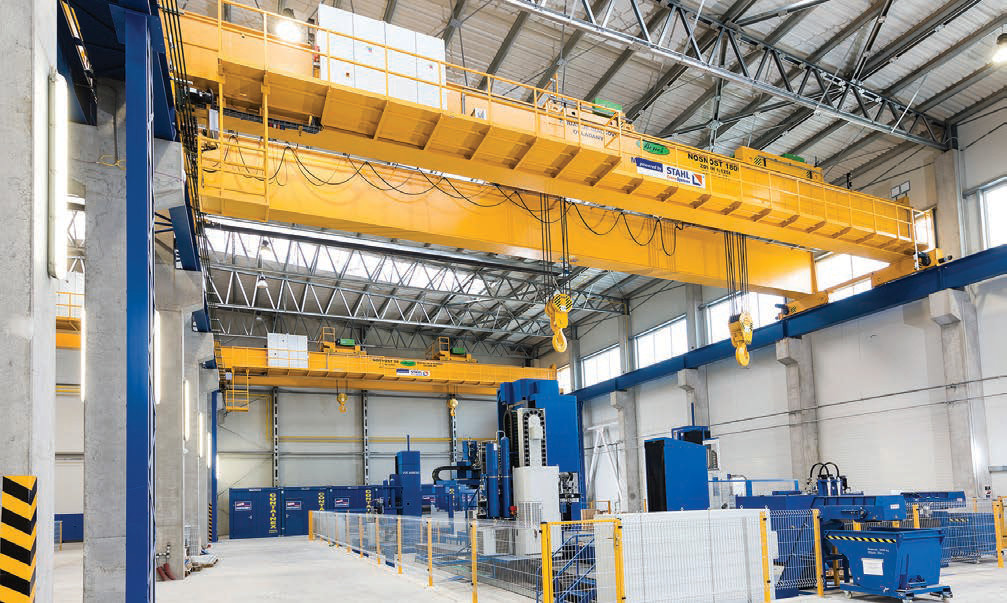 Double-girder overhead travelling cranes at work in the factory building of VVE, a Slovakian manufacturer of hydroelectric power plants.
Double-girder overhead travelling cranes at work in the factory building of VVE, a Slovakian manufacturer of hydroelectric power plants.
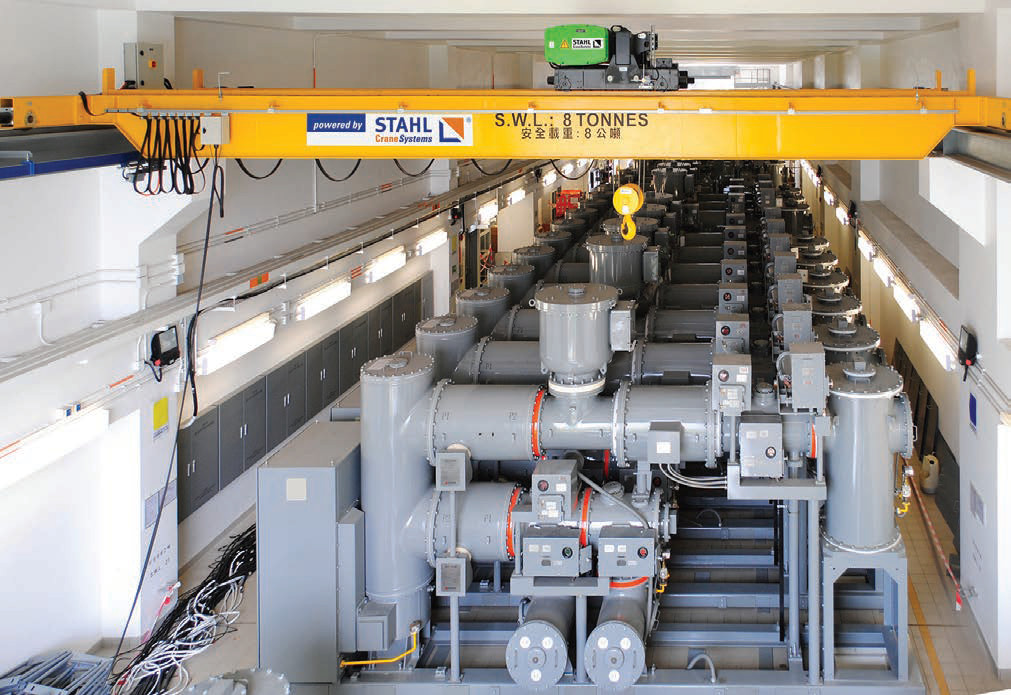 A Stahl CraneSystems installation at CLP Power Hong Kong, the largest electricity supplier in the region.
A Stahl CraneSystems installation at CLP Power Hong Kong, the largest electricity supplier in the region.
